When November arrives in Mexico, kitchens fill with the warm scents of cinnamon, orange blossom, and chocolate as families prepare special foods for Día de los Muertos. This beautiful celebration honors departed loved ones through carefully chosen dishes that carry deep spiritual meaning.
Each food placed on colorful altars serves as both nourishment for visiting spirits and a bridge connecting the living with those who have passed on. From sweet breads shaped like bones to ancient drinks made from corn, these eighteen traditional foods transform remembrance into a feast for the soul.
1. Pan de Muerto – Sweet Bread Shaped Like Bones
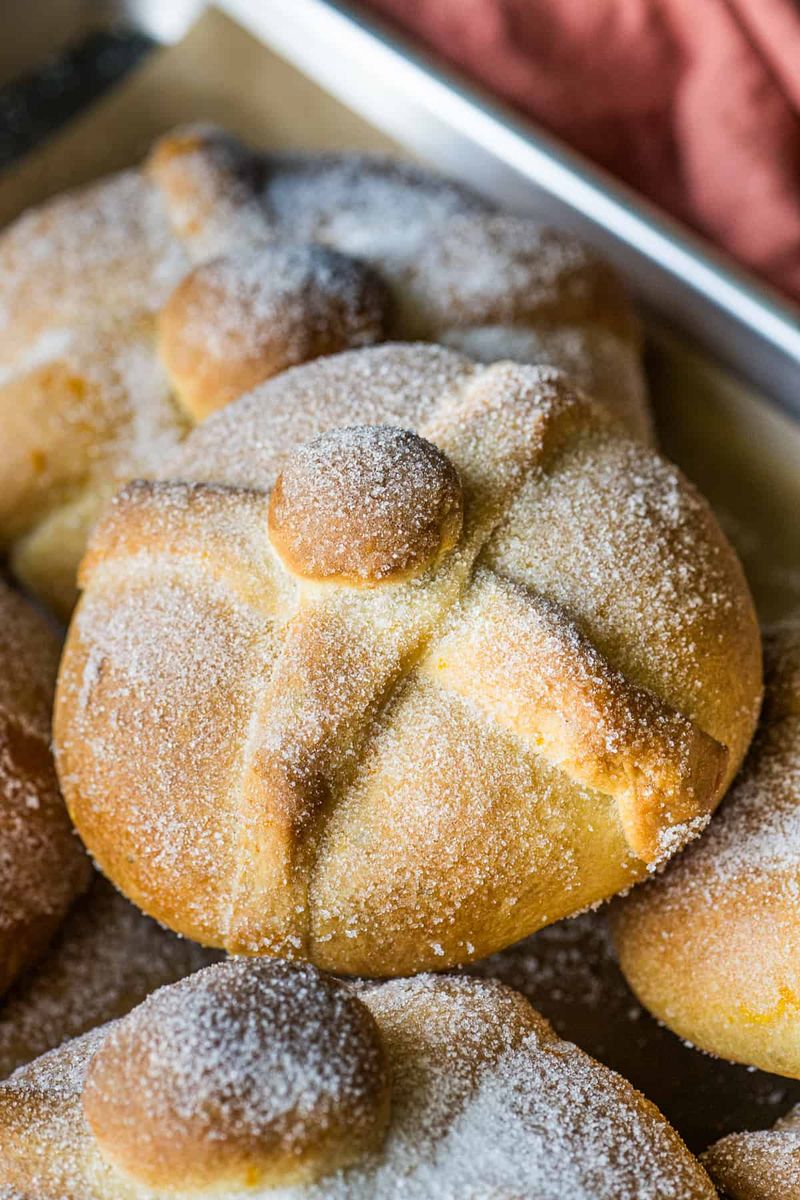
Golden-brown and glistening with sugar, this iconic bread sits at the heart of every Day of the Dead altar. Bakers craft each loaf with tender care, shaping dough into round buns topped with crossed strips that look like bones.
Orange blossom water or anise seeds give the bread its distinctive flavor, while the bone decorations represent departed souls. The circular shape symbolizes the endless cycle of life and death.
Families often bake multiple loaves, sharing them with neighbors and keeping the largest ones for their home altars.
2. Sugar Skulls – Colorful Edible Art
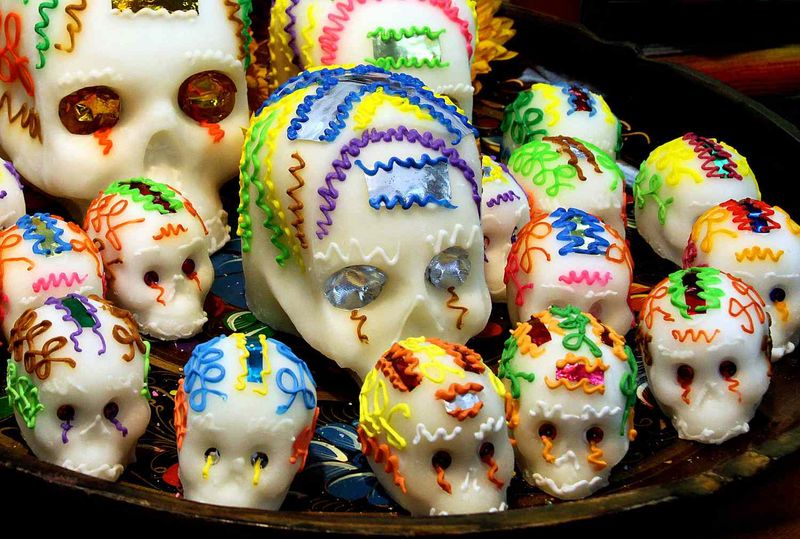
Bright pink roses bloom across white sugar foreheads while purple swirls dance around empty eye sockets. Artisans mold these sweet skulls from pure sugar, creating edible masterpieces that celebrate rather than fear death.
Many families personalize skulls with the names of loved ones written in colorful icing. The cheerful decorations remind everyone that death is a natural part of life’s journey.
While technically edible, most people treasure these delicate creations as beautiful altar decorations that honor specific family members who have passed away.
3. Tamales – Ancient Bundles of Love
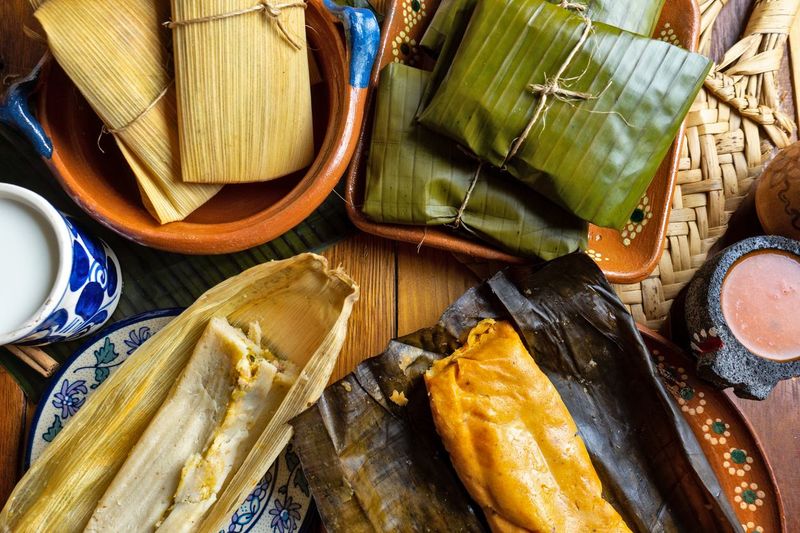
Wrapped snugly in corn husks like precious gifts, tamales carry flavors that connect modern families to their Aztec ancestors. Grandmothers gather their daughters and granddaughters for tamaladas, teaching the ancient art of spreading masa and folding husks.
Fillings range from savory pork and chicken to sweet combinations with pineapple and raisins. Each family guards their special recipe like a treasured secret.
The corn represents life itself in Mexican culture, making tamales perfect offerings for spirits returning home to visit their loved ones.
4. Mole – Complex Sauce Fit for Spirits
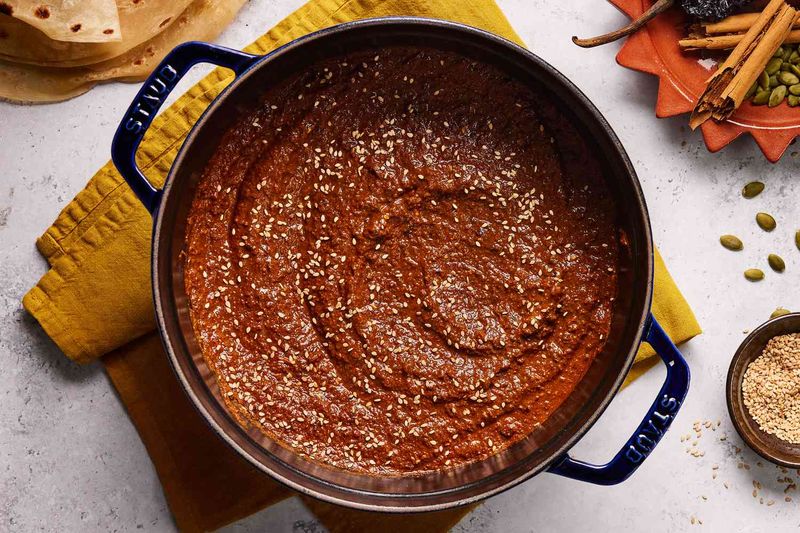
Dark as rich earth and complex as life itself, mole requires patience, skill, and sometimes thirty different ingredients. Cooks toast chilies, grind seeds, and blend spices for hours to create this sacred sauce.
The famous mole poblano combines chocolate with chilies, creating a flavor so divine that legends claim it was invented by nuns inspired by angels. Each region treasures its own mole recipe.
Families serve mole over turkey or chicken as a special offering, believing its complexity honors the sophisticated tastes of visiting spirits.
5. Atole – Warm Comfort from Ancient Times
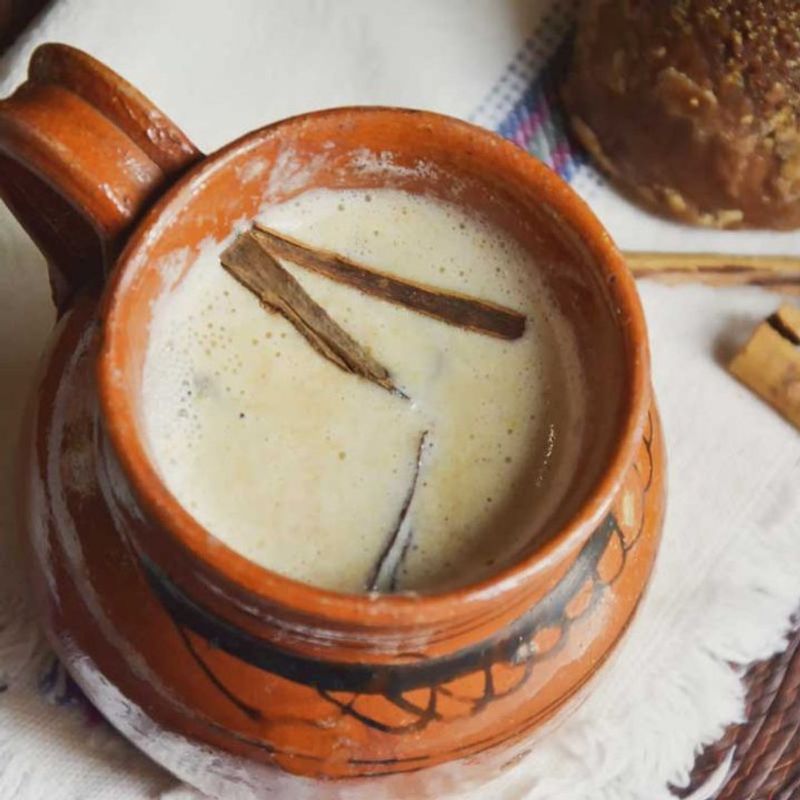
Steam rises from clay cups filled with this thick, creamy drink that has warmed Mexican hearts for over a thousand years. Made from ground corn, atole carries the essence of pre-Hispanic traditions in every sip.
Cinnamon sticks and vanilla beans infuse the drink with cozy flavors, while some versions include chocolate for extra richness. The thick consistency comes from cornmeal cooked slowly with milk or water.
Families believe atole provides spiritual nourishment for souls making their long journey from the afterlife back to earth for this special celebration.
6. Mezcal – Smoky Spirit for Sacred Toasts
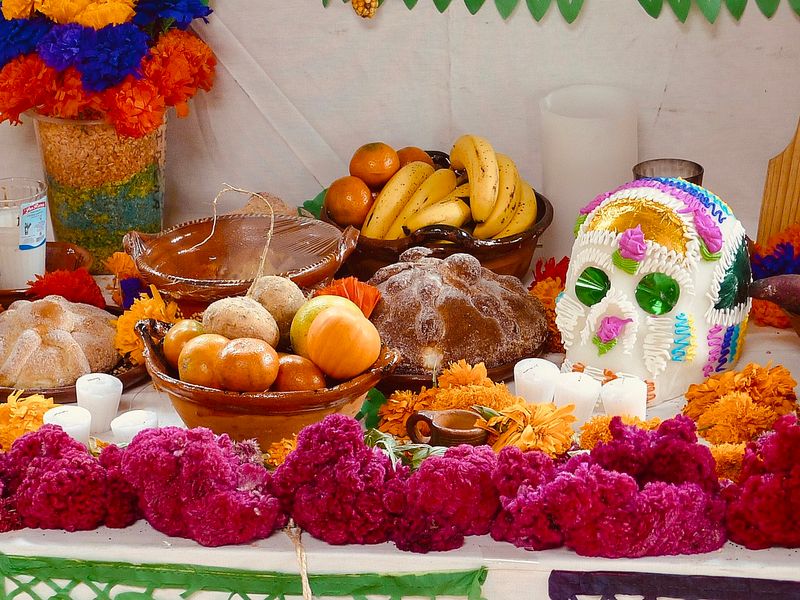
Smoky and mysterious, mezcal carries the essence of agave plants roasted in underground pits for days. This sacred drink connects the living to the spirit world through ancient rituals and careful sipping.
Unlike tequila, mezcal embraces a rustic, earthy character that varies dramatically between regions and producers. Some bottles even contain the famous gusano worm.
Families place small glasses on altars as offerings while sharing larger portions with guests, toasting to the memory of departed loved ones with reverent appreciation.
7. Personal Favorites – From Tacos to Coca-Cola
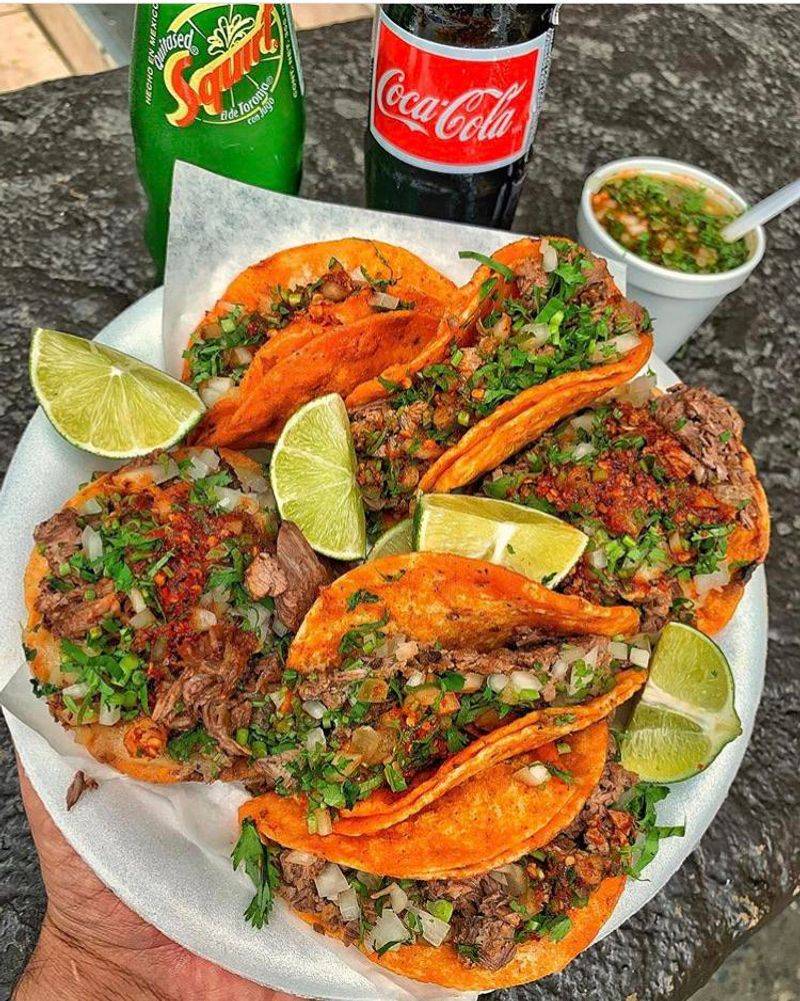
Abuela’s favorite Coca-Cola sits next to Uncle Miguel’s beloved fish tacos on altars across Mexico. Modern families embrace the beautiful truth that spirits crave the foods they loved most in life.
Some altars feature hamburgers, pizza, or candy bars alongside traditional offerings. The key is remembrance, not rigid tradition.
Children giggle placing their grandfather’s favorite beer or their sister’s preferred cookies on the altar. Love transcends cultural rules, and spirits appreciate familiar flavors that sparked joy during their earthly lives.
8. Pumpkin Candy – Sweet Harvest Memories
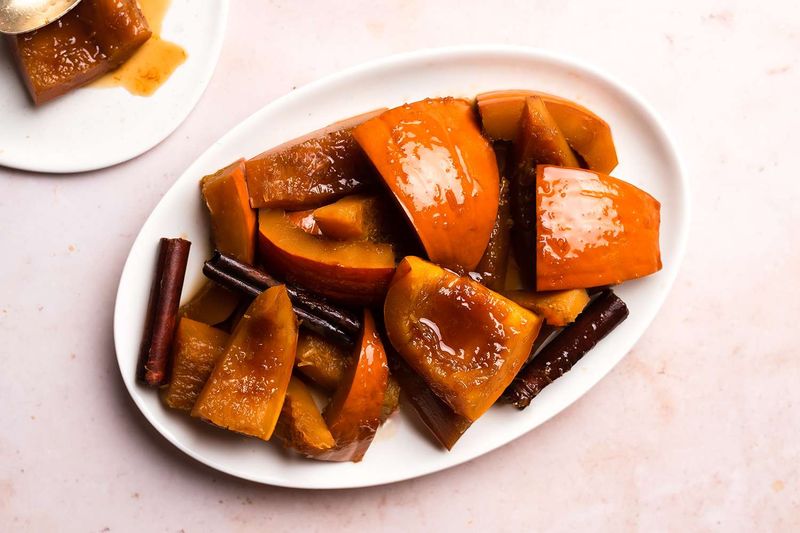
Amber-colored pumpkin slices glisten like jewels after slow-cooking in brown sugar syrup for hours. This traditional candy, called calabaza en tacha, transforms humble squash into something magical.
Cinnamon bark and whole cloves infuse the syrup with warm spices while piloncillo sugar creates deep caramel flavors. The cooking process requires patience as pumpkin slowly absorbs the sweet liquid.
Families often prepare large batches, sharing the sticky-sweet treat with neighbors while keeping the best pieces for altar offerings that honor harvest traditions and earth’s bounty.
9. Chapulines – Crunchy Ancient Protein
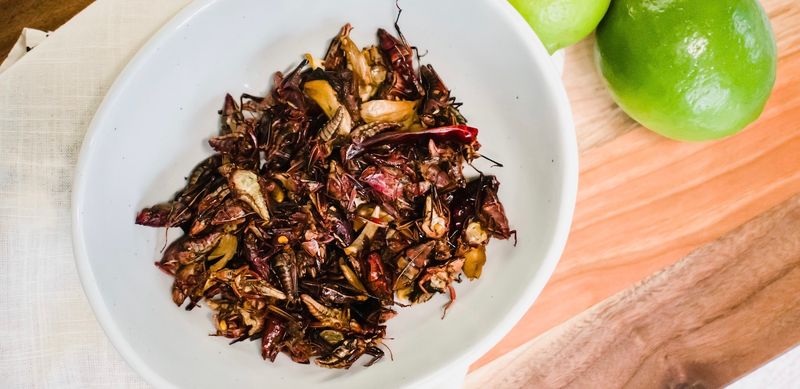
Lime juice sizzles as it hits the hot comal where grasshoppers toast to crispy perfection. In Oaxaca, these protein-packed insects represent a direct link to pre-Hispanic dining traditions.
Garlic, chili powder, and salt season the chapulines, creating a snack that’s surprisingly addictive. Many first-time visitors discover they taste like nutty, crunchy popcorn.
Adventurous families include chapulines on their altars to honor indigenous ancestors who relied on these nutritious insects. The offering celebrates Mexico’s diverse culinary heritage and environmental wisdom.
10. Chocolate – Sacred Gift from the Gods
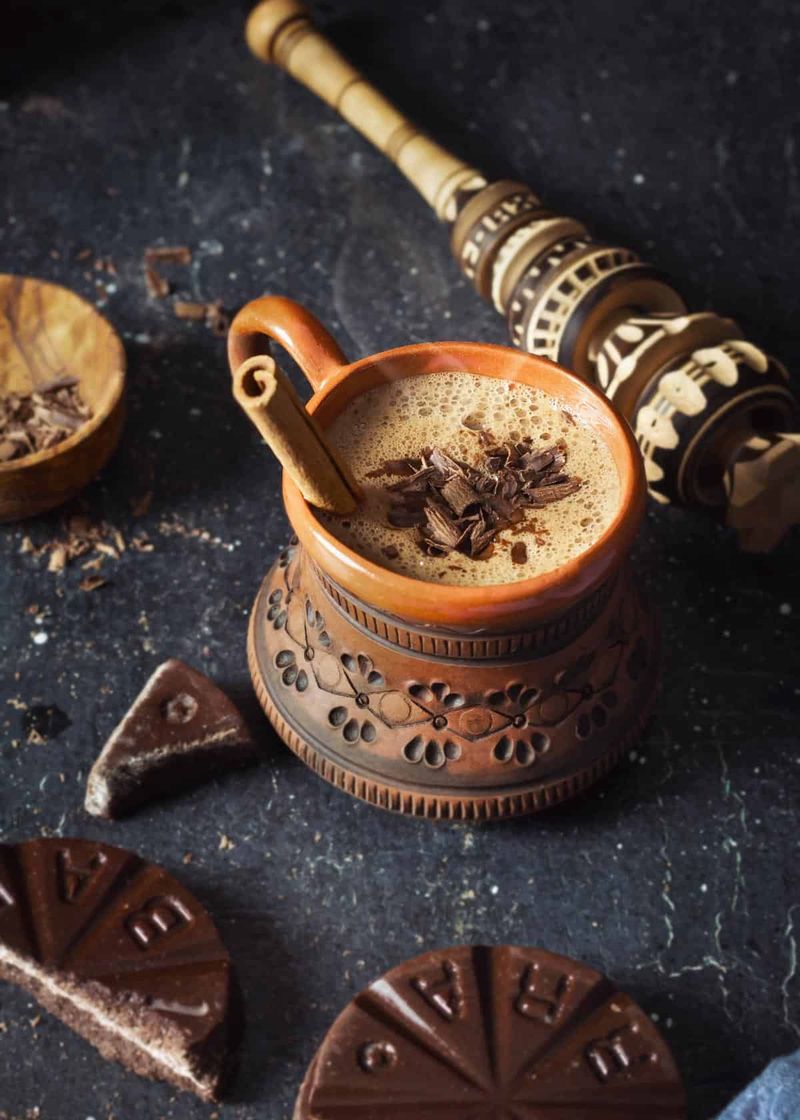
Rich and bitter, chocolate flows through Day of the Dead celebrations like liquid gold. Ancient Aztecs believed cacao beans were gifts from Quetzalcoatl, making chocolate literally food of the gods.
Families incorporate chocolate into drinks, mole sauces, and special desserts prepared exclusively for this celebration. The complex flavors range from sweet milk chocolate to intense dark varieties.
Placing chocolate on altars honors both departed loved ones and ancient spiritual beliefs. Many families prepare traditional hot chocolate using clay whisks called molinillos, creating foam that represents prayers rising to heaven.
11. Arroz con Leche – Creamy Childhood Comfort
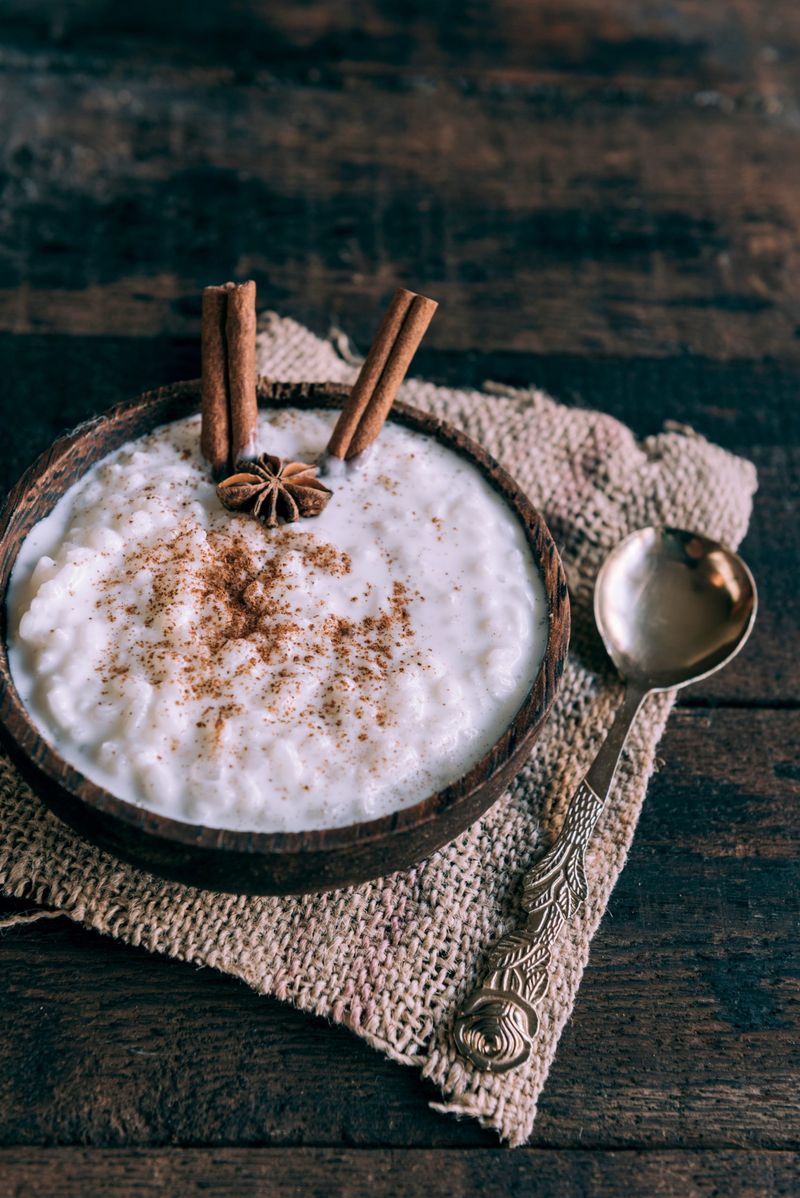
Cinnamon perfumes the kitchen as rice slowly absorbs warm milk, transforming into creamy pudding that tastes like childhood hugs. This beloved dessert evokes memories of grandmothers stirring pots with endless patience.
Some recipes include raisins or condensed milk for extra sweetness, while others rely on vanilla and cinnamon for their gentle flavor. The texture should be creamy but not too thick.
Families often prepare arroz con leche specifically to honor departed children or elderly relatives who found comfort in this simple, nurturing dessert throughout their lives.
12. Pozole – Hearty Soup for Gathering
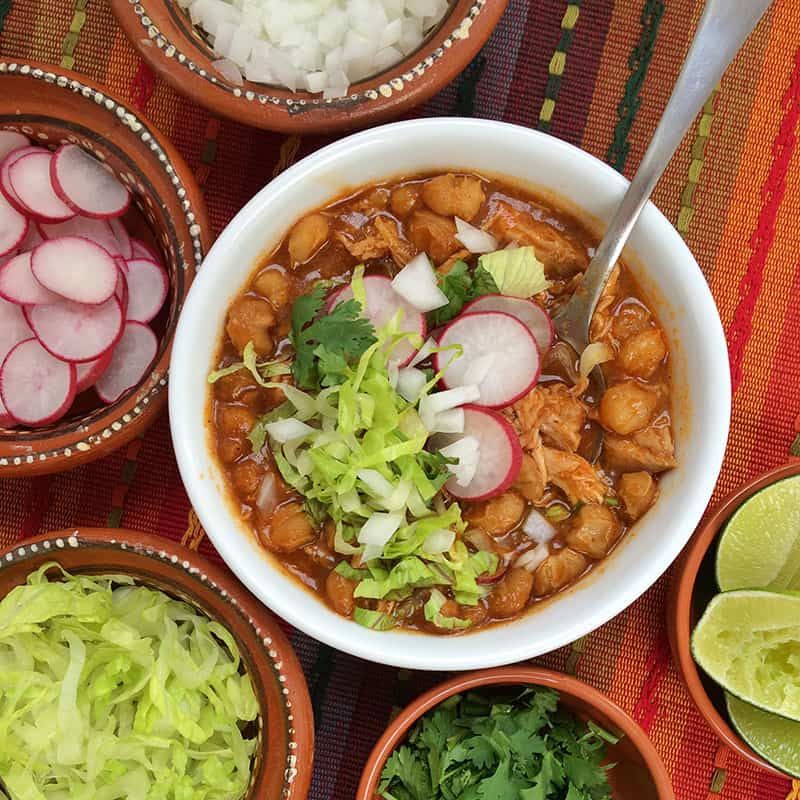
Large hominy kernels bob like white flowers in rich red broth, creating a soup that brings families together around steaming bowls. Pozole represents community, sharing, and the warmth of collective memory.
Pork shoulder simmers for hours until tender enough to shred with a fork. Garnishes include crisp cabbage, sliced radishes, oregano, and lime wedges that diners add according to personal taste.
Many families serve pozole during Day of the Dead gatherings, believing the communal nature of sharing this hearty soup helps spirits feel welcomed back into family celebrations.
13. Churros – Sweet Treats for Young Spirits
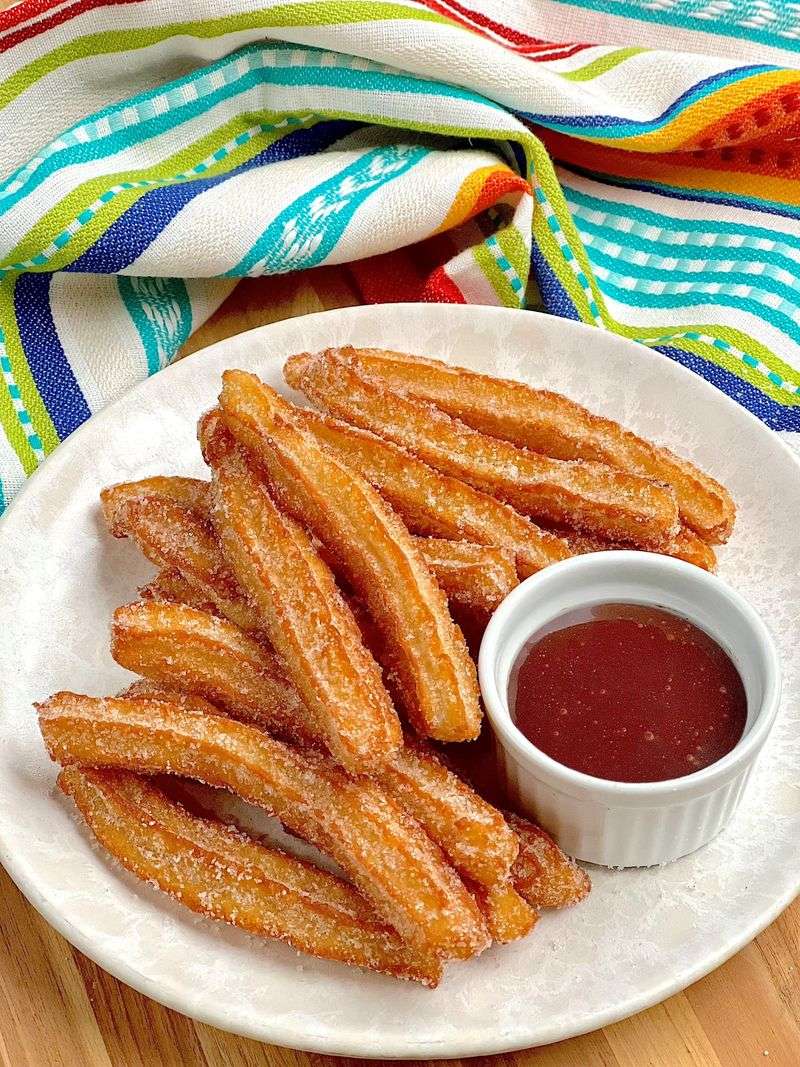
Hot oil bubbles as star-shaped dough emerges golden and crispy, ready for a generous roll in cinnamon sugar. These beloved treats bring smiles to children and adults alike with their simple, satisfying crunch.
Street vendors and home cooks alike master the art of piping perfect ridged cylinders that hold cinnamon sugar in every groove. Some fill churros with dulce de leche or chocolate.
Families often place churros on altars dedicated to children who passed away, believing young spirits especially enjoy these playful, sweet snacks that represent joy and innocence.
14. Candied Nuts – Earth’s Sweet Treasures
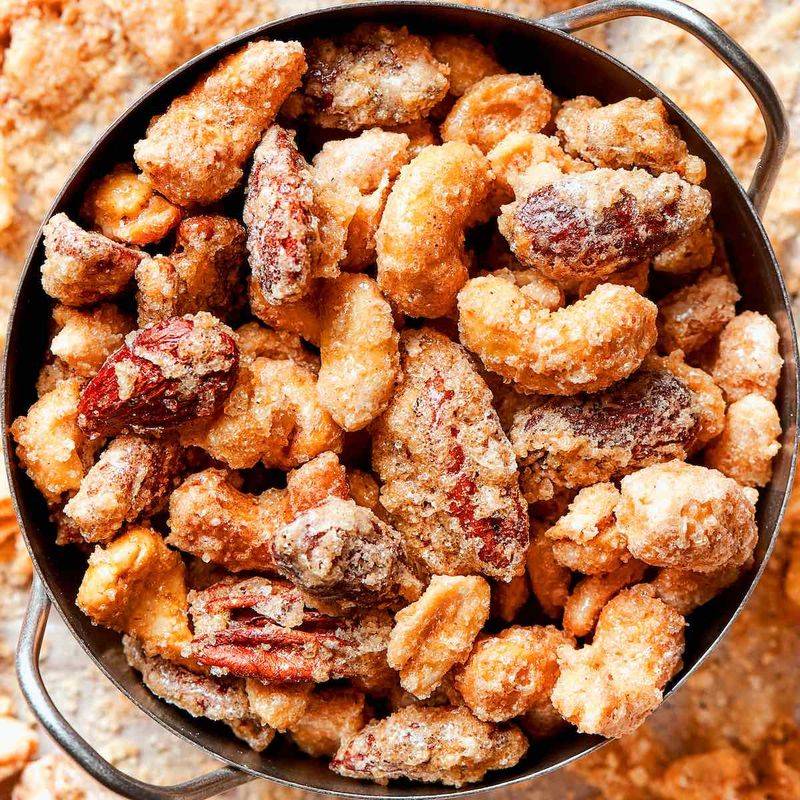
Pecans crack and pop as hot sugar syrup transforms them into glossy amber jewels. These candied treasures represent earth’s bounty and the grounding energy that helps spirits navigate between worlds.
Street vendors spin sugar into thin threads that coat nuts with delicate shells of sweetness. The process requires perfect timing and temperature control to achieve the ideal crunch.
Altars often feature small bowls of these treats, symbolizing prosperity and the earth element. Families believe the natural energy of nuts helps anchor visiting spirits during their brief return to the physical world.
15. Seasonal Fruits – Nature’s Sweet Offerings
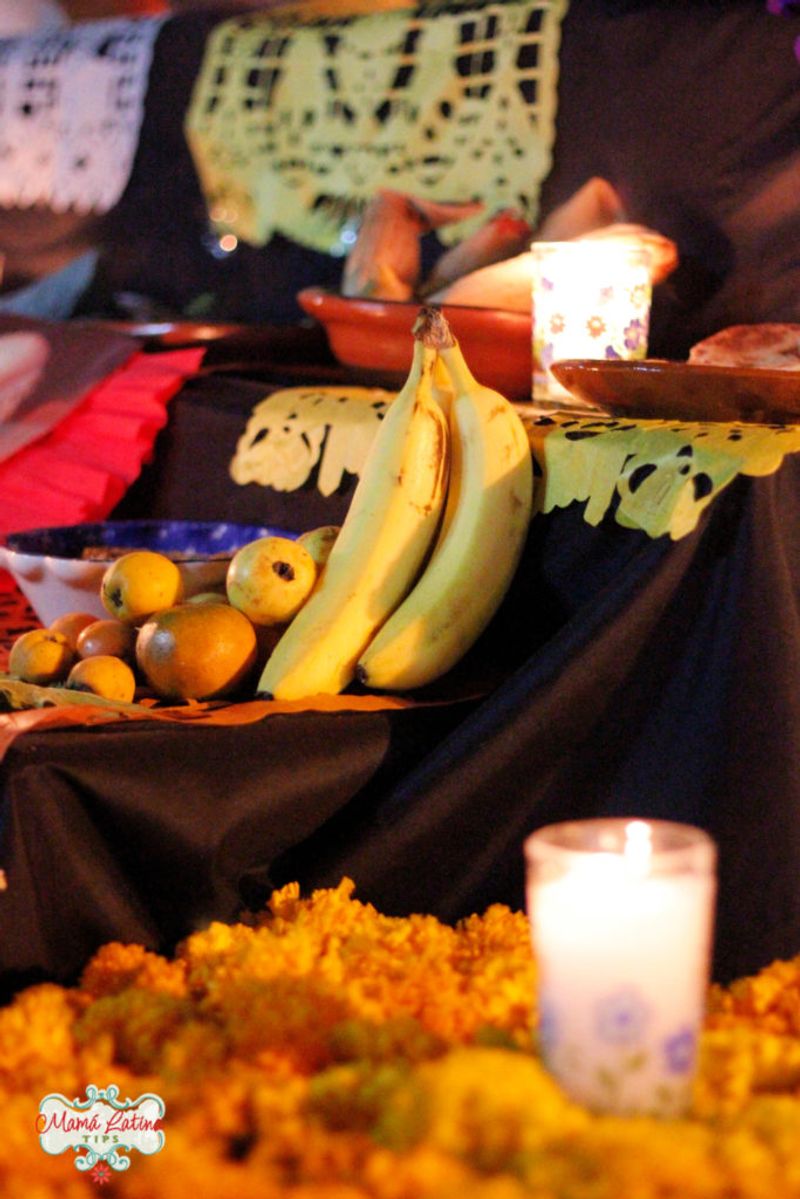
Bright orange tejocotes nestle alongside ruby-red guavas and golden oranges, creating a rainbow of seasonal abundance. Sugar cane stalks lean against altar corners like sweet walking sticks for traveling spirits.
Each fruit carries symbolic meaning: oranges represent the sun’s warmth, guavas symbolize sweetness of memory, and tejocotes connect families to indigenous traditions. Sugar cane provides energy for long spiritual journeys.
Families carefully select the ripest, most beautiful fruits, believing spirits deserve the very best offerings. Children often help arrange colorful displays that celebrate nature’s generous harvest season.
16. Regional Sweet Preserves – Local Love in Syrup
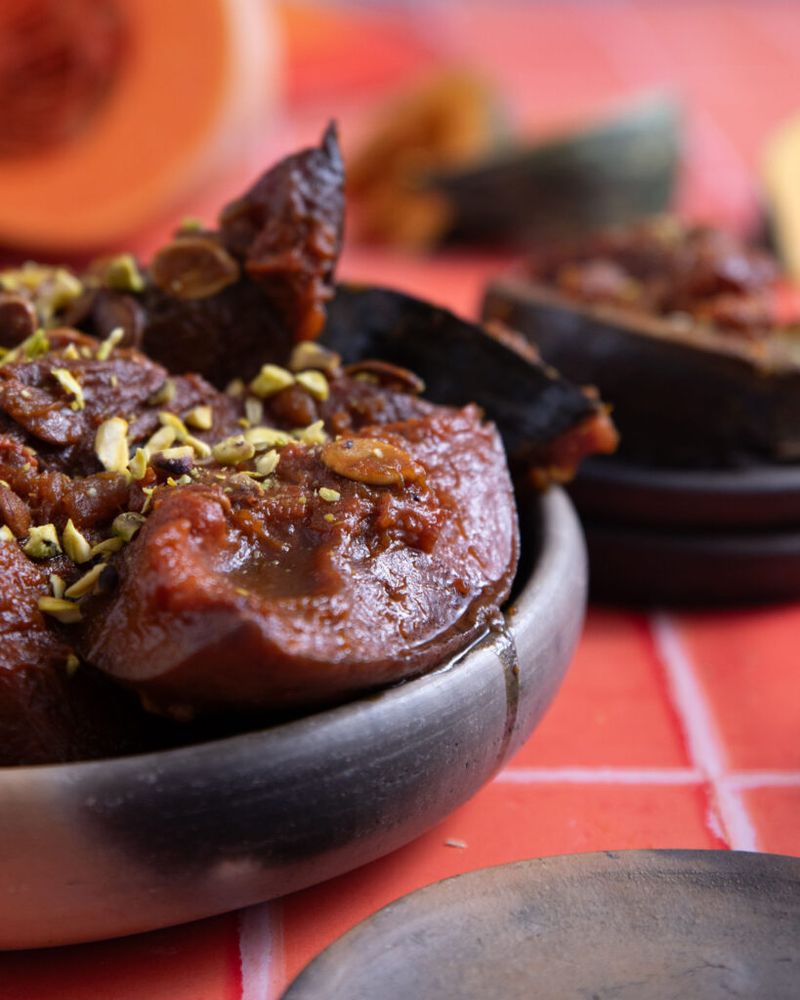
Purple figs float in amber syrup while sweet potatoes glisten like precious stones, each region contributing its own special preserve recipes. Families transform local harvests into altar-worthy delicacies using time-honored techniques.
Piloncillo sugar creates rich, molasses-like syrups that perfectly complement each fruit or vegetable’s natural flavors. The slow cooking process concentrates sweetness while maintaining texture.
Grandmothers pass down secret timing and spice combinations that make their preserves legendary within extended families. These regional specialties celebrate local agriculture and family culinary traditions simultaneously.
17. Champurrado – Thick Chocolate Warmth
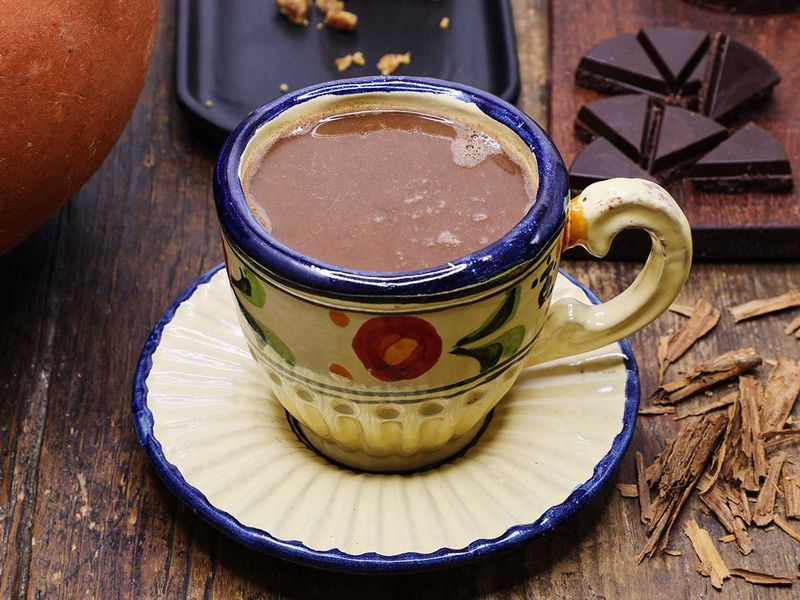
Chocolate swirls through thick corn masa, creating a drink so rich it’s almost a dessert. This beloved beverage warms hearts and hands during cool November evenings when families gather to remember.
Clay pots bubble on stoves as cooks whisk masa harina with chocolate tablets, cinnamon, and brown sugar. The consistency should coat a spoon but remain drinkable.
Street vendors ladle champurrado into plastic cups for festival-goers, while families serve it in special clay mugs reserved for important occasions. The drink represents comfort, tradition, and the nurturing power of chocolate.
18. Tortillas and Salt – Basic Elements of Life
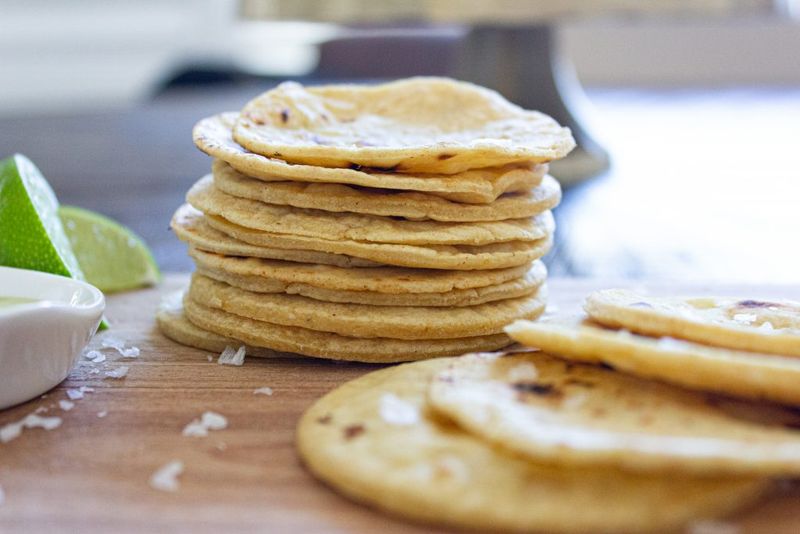
Simple corn tortillas stack like golden discs beside small bowls of pure white salt, representing life’s most fundamental needs. These humble offerings acknowledge that spirits require basic sustenance above all else.
Fresh tortillas, still warm from the comal, provide the foundation for countless Mexican meals. Their presence on altars symbolizes daily bread and family unity around shared food.
Salt serves a dual purpose: purifying the altar space and preventing spiritual corruption during souls’ earthly visits. Together, tortillas and salt represent the essential elements that sustain both physical and spiritual life.



